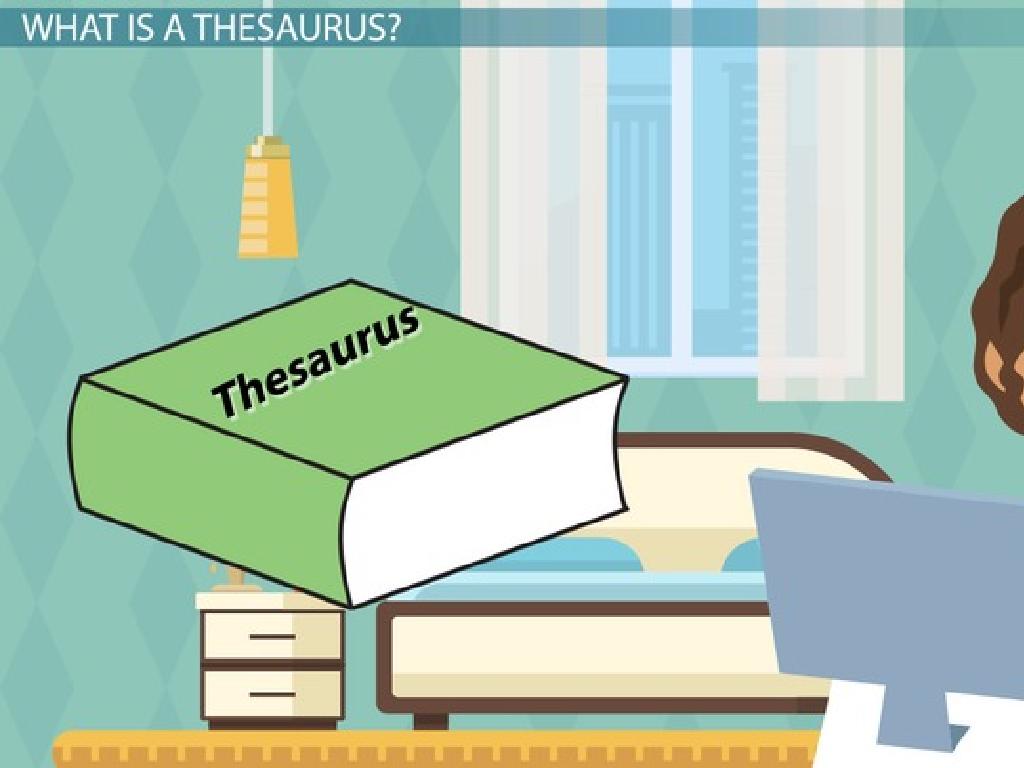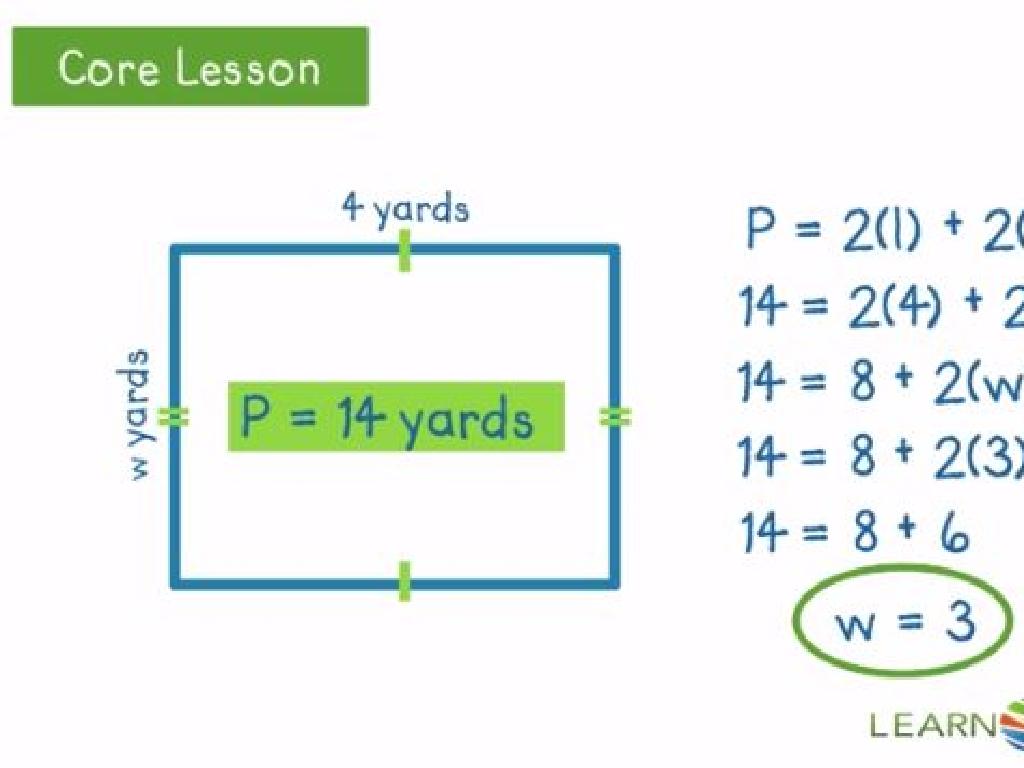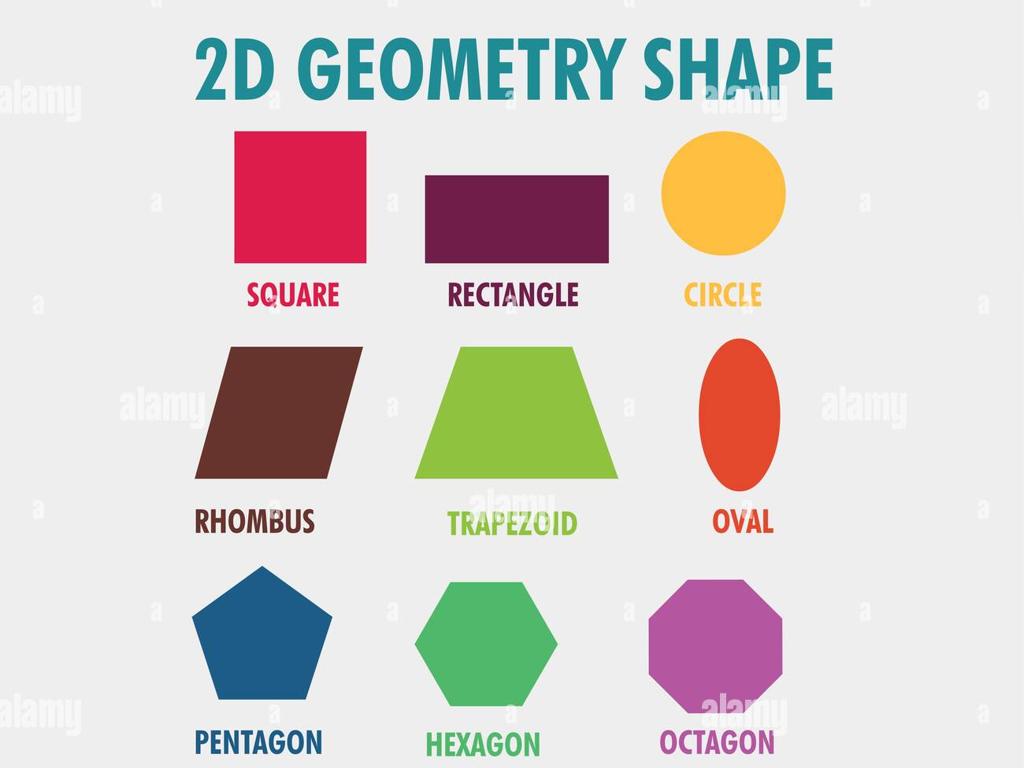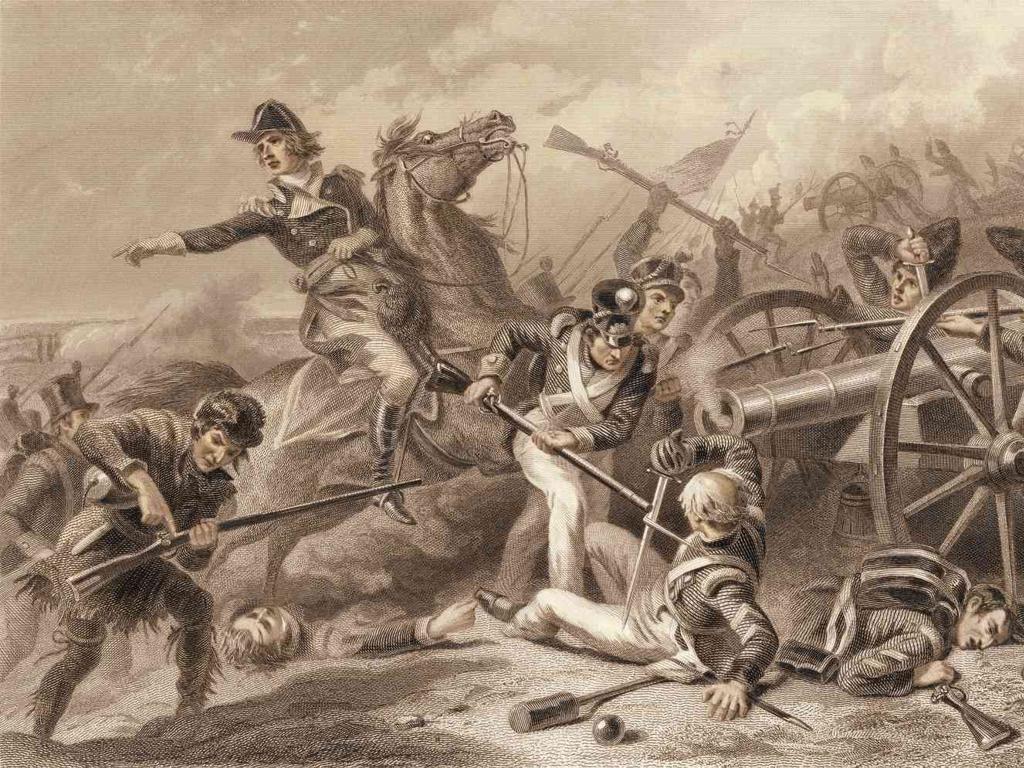Convert Metric Units Involving Decimals
Subject: Math
Grade: Fifth grade
Topic: Metric Units Of Measurement
Please LOG IN to download the presentation. Access is available to registered users only.
View More Content
Welcome to Metric Measurements!
– Learn metric units of measurement
– Understand meters, liters, and grams
– Importance of conversion skills
– Converting helps in math and daily life
– Real-world metric applications
– Use metrics in cooking, science, and travel
– Practice with examples
|
This slide introduces students to the concept of metric units of measurement, which are used worldwide for length (meters), volume (liters), and mass (grams). Emphasize the importance of learning to convert between these units, as it is a crucial skill in mathematics and in everyday situations. Provide real-world examples where metric conversions are necessary, such as following a recipe, understanding a science experiment, or traveling to a country that uses the metric system. Encourage students to practice with examples and to think of other situations where they might need to use metric conversions.
Understanding Metric Units
– Explore meters, liters, grams
– Basic units for length, volume, and mass
– Compare units to everyday objects
– A meter is about the length of a guitar; a liter is a large bottle of soda; a gram is a paperclip
– Visual examples of metric units
– Use visuals like a ruler for meters, a water bottle for liters, and a scale for grams
– Practice with real-life measurements
|
This slide introduces students to the metric system, which is used worldwide for scientific and everyday measurements. Start by explaining the basic units of measurement: meters for length, liters for volume, and grams for mass. Use relatable objects to help students compare and better understand the size of each unit. For example, a meter is approximately the length of a guitar, a liter is like a large bottle of soda, and a gram is as light as a paperclip. Incorporate visuals such as rulers, bottles, and scales to give a concrete sense of these units. Finally, engage students with hands-on activities where they measure items around the classroom using metric units to reinforce their understanding.
Understanding Decimals in Metric Conversions
– Review decimal points
– Decimal points separate whole numbers from fractional parts.
– Decimals in metric conversions
– Decimals shift to convert metric units, like 1.5 km to 1500 m.
– Practice reading decimals
– Saying decimals correctly is key to understanding their value.
– Importance of place value
– Knowing each digit’s place helps in converting units accurately.
|
Begin with a quick review of what decimal points are and their role in separating whole numbers from the fractional part. Emphasize the importance of place value in understanding the worth of each digit in a decimal number. Explain how in the metric system, moving the decimal point can easily convert between units, such as kilometers to meters or grams to kilograms. Engage the class in practicing reading decimals aloud to reinforce their understanding of place value and prepare them for applying this knowledge to metric conversions. Provide examples and encourage students to come up with their own examples to share.
Converting Metric Units with Decimals
– Learn conversion steps
– Use the decimal point effectively
– Move the decimal point to change units
– Example: km to m
– 1.5 km = 1,500 m (move 3 places to right)
– Example: g to kg
– 250 g = 0.25 kg (move 3 places to left)
|
This slide introduces students to the concept of converting metric units involving decimals. The focus is on understanding the steps for conversion and using the decimal point to shift the value according to the metric scale. Emphasize that moving the decimal point to the right converts larger units to smaller units (kilometers to meters), and moving it to the left converts smaller units to larger units (grams to kilograms). Provide clear examples and encourage students to practice with additional problems. Remind them that the metric system is based on multiples of 10, which simplifies the conversion process.
Converting Metric Units with Decimals
– Walk through conversion examples
– We’ll convert units like meters to centimeters together, step by step.
– Engage in class conversion practice
– You’ll try converting units like grams to kilograms on your own with the class.
– Discuss common conversion errors
– Common errors: misplacing the decimal or using the wrong direction for conversion.
– Learn tips to avoid mistakes
– Always double-check your work and remember the ‘King Henry Died By Drinking Chocolate Milk’ mnemonic.
|
This slide is designed for a hands-on learning experience. Start by demonstrating how to convert metric units involving decimals, ensuring to explain each step clearly. Involve the class by having students participate in solving problems, which will help solidify their understanding. Discuss common mistakes made during conversions, such as decimal misplacement and direction of conversion, and provide strategies to avoid these errors. Encourage students to double-check their work and use mnemonic devices to remember unit order. Prepare several examples of varying difficulty for the class to work through and consider peer review to foster collaborative learning.
Practice Time: Metric Conversions
– Solve individual conversion problems
– Pair up and compare solutions
– Work with a partner to solve and explain your reasoning
– Discuss answers as a class
– Review answers together to ensure understanding
– Understand decimal metric units
|
This slide is designed to engage students in active practice of converting metric units involving decimals. Start with individual practice to allow students to apply what they’ve learned independently. Then, have them pair up to discuss their methods and answers, fostering peer learning. Finally, bring the class together for a group review to go over the answers, clarify any misunderstandings, and reinforce the concept. Ensure that each student is comfortable with the process of converting between different metric units, such as kilometers to meters, meters to centimeters, and so on, especially when decimals are involved. Possible activities could include converting measurements for ingredients in a recipe, distances in a treasure map, or quantities in a science experiment.
Metric Conversions in Daily Life
– Cooking with metric units
– Recipes often use grams and liters
– Science measurements
– Experiments require precise metric measurements
– Travel and metric system
– Many countries use kilometers for distance
– Class discussion on metric use
|
This slide aims to show students the practical applications of metric conversions in everyday life. Cooking often involves measuring ingredients in grams and liters, which is a great way to practice converting between units. In science, accurate measurements using the metric system are crucial for experiments. When traveling, understanding kilometers for distance and liters for fuel can be very useful, especially outside the United States where the metric system is standard. Encourage an interactive class discussion by asking students to share where they have encountered metric units in their lives, such as at the grocery store or during family trips. This will help them connect classroom learning with real-world experiences.
Class Activity: Metric Conversion Relay
– Form teams for a relay race
– Solve a metric conversion problem
– Convert units like meters to kilometers
– Pass the baton to the next teammate
– Aim for correct conversions to win
– Accuracy is key, double-check your work!
|
This activity is designed to make learning metric conversions fun and engaging through a relay race format. Divide the class into small teams, and provide each team with a baton (this could be any object that’s easy to pass around). Set up a series of metric conversion problems that involve decimals, such as converting meters to kilometers or grams to kilograms. Each student in the team must solve one problem before passing the baton to the next teammate. The first team to have all members complete their conversions correctly wins. Ensure that students understand the importance of accuracy over speed, and encourage them to double-check their answers. Possible variations of the activity could include different units or more complex problems for advanced students.
Wrapping Up: Metric Conversions
– Review of metric conversion concepts
– Significance of practice in mastery
– Regular practice solidifies understanding
– Real-world application of conversions
– Examples: measuring ingredients, gauging distances
– Homework assignment for practice
|
As we conclude today’s lesson, it’s crucial to recap the key points about converting metric units involving decimals. Emphasize the importance of practice in mastering these concepts, as it leads to better retention and confidence in using these skills. Highlight how these conversions are not just theoretical but are used in everyday scenarios such as cooking or traveling. For homework, assign a set of problems that require students to apply what they’ve learned in class, ensuring they cover a range of units and conversion types. This will help reinforce their skills and prepare them for more complex mathematical concepts in the future.






